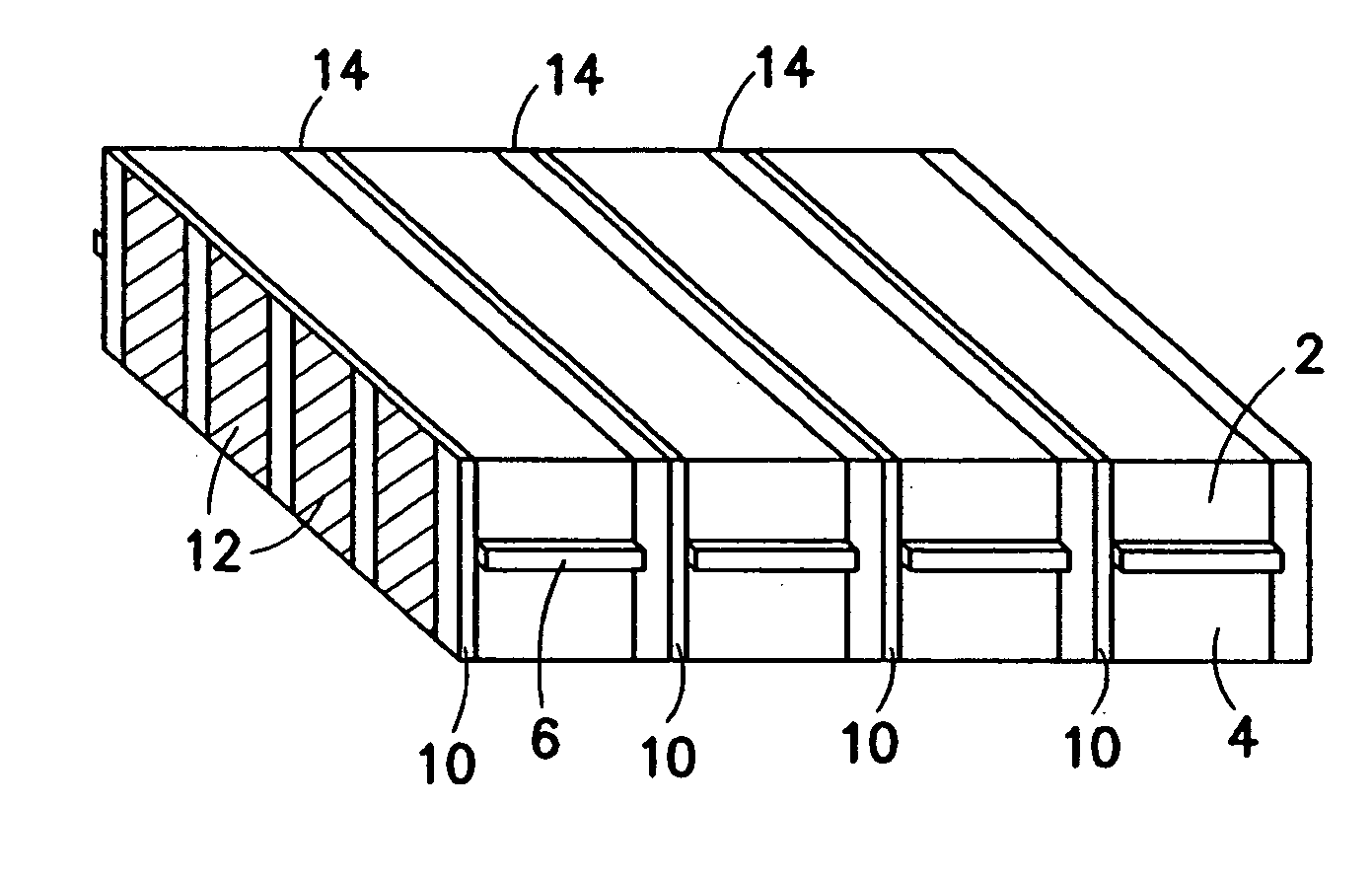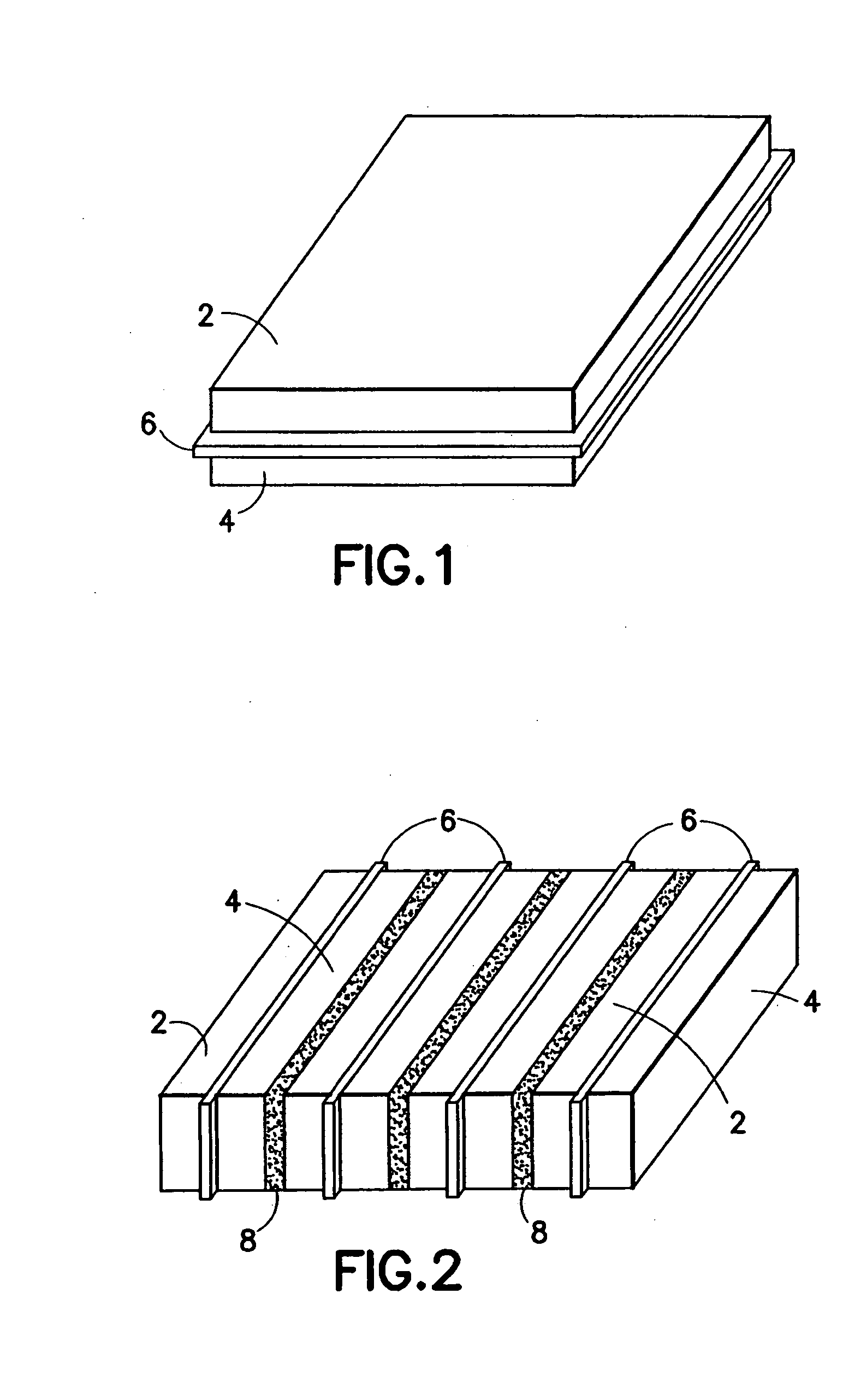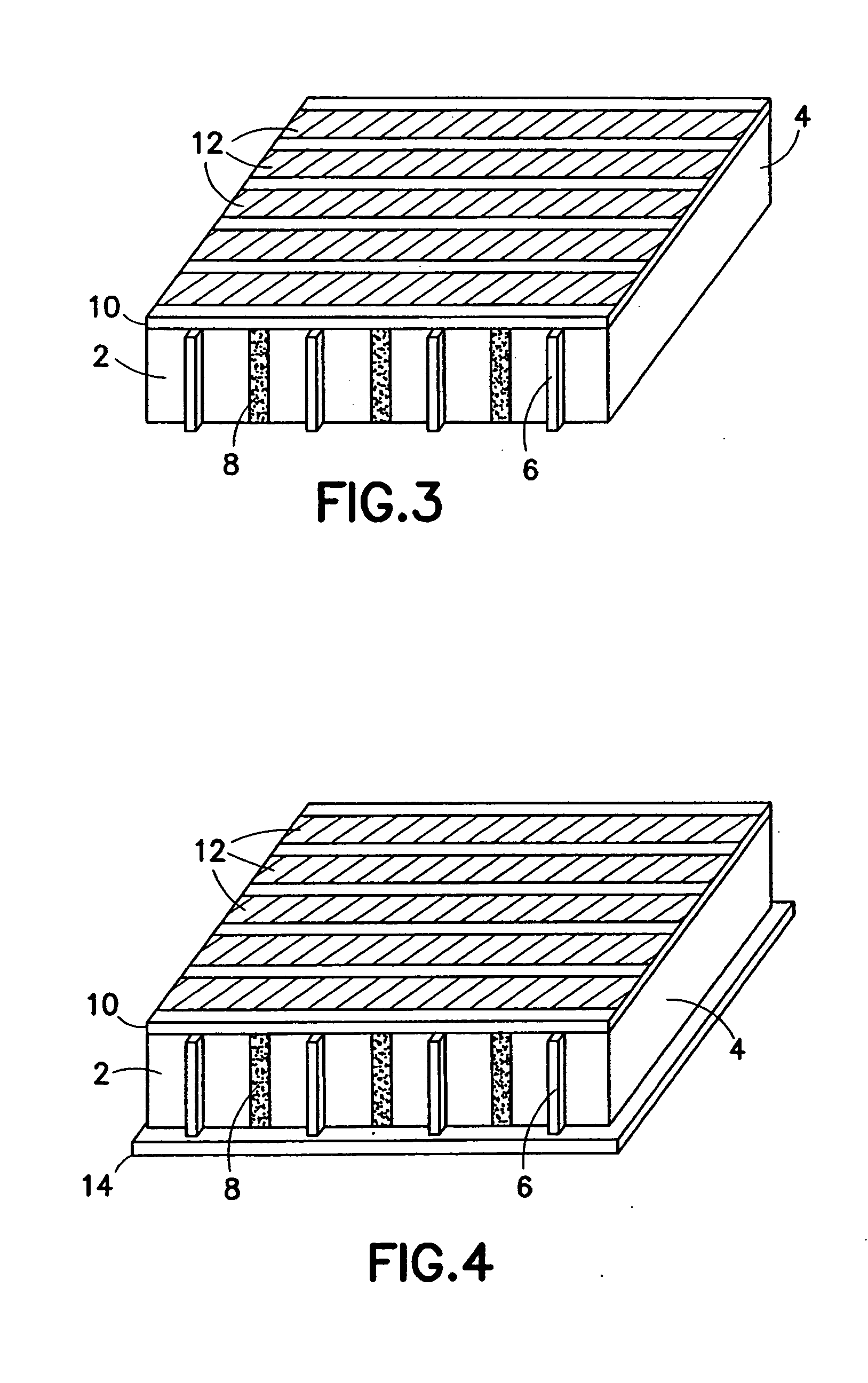Method for making multi-layer ceramic acoustic transducer
a multi-layer ceramic and transducer technology, applied in piezoelectric/electrostrictive transducers, generators/motors, mechanical vibration separation, etc., can solve the problems of reducing the electrical efficiency and element sensitivity, difficult to maintain the tolerances necessary for ultrasound transducers, and reducing the total electrical impedance , to achieve the effect of improving the matching of the acoustic stack impedance, reducing the total electrical impedance, and increasing the penetration depth for imaging
- Summary
- Abstract
- Description
- Claims
- Application Information
AI Technical Summary
Benefits of technology
Problems solved by technology
Method used
Image
Examples
Embodiment Construction
[0017] The invention is directed to a method for preparing a multi-layer ceramic acoustic stack comprised of an even number of ceramic layers. For the purpose of illustration, a method for preparing a two-layer ceramic acoustic stack will now be disclosed in detail. Two-layer stacks can themselves be stacked to construct multilayer stacks having four or more ceramic layers. The disclosed method is useful for preparing acoustic elements in both linear and multi-row acoustic arrays, as well as small elements for two-dimensional acoustic arrays. Such acoustic arrays are useful for medical imaging applications.
[0018] In accordance with the method for forming two-layer piezoelectric acoustic transducers disclosed in detail hereinafter, the structural integrity of the piezoelectric element is not weakened by removal of a portion of the element. The method is based on laminating two piezoelectric ceramic layers with confronting metallized surfaces. Optionally, a thin electrical conductor ...
PUM
| Property | Measurement | Unit |
|---|---|---|
| electrical impedance | aaaaa | aaaaa |
| electrical impedance | aaaaa | aaaaa |
| electrical impedance | aaaaa | aaaaa |
Abstract
Description
Claims
Application Information
 Login to View More
Login to View More - R&D
- Intellectual Property
- Life Sciences
- Materials
- Tech Scout
- Unparalleled Data Quality
- Higher Quality Content
- 60% Fewer Hallucinations
Browse by: Latest US Patents, China's latest patents, Technical Efficacy Thesaurus, Application Domain, Technology Topic, Popular Technical Reports.
© 2025 PatSnap. All rights reserved.Legal|Privacy policy|Modern Slavery Act Transparency Statement|Sitemap|About US| Contact US: help@patsnap.com



